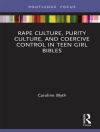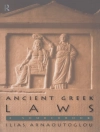In 1939 all German Jews had to become members of a newly founded Reich Association. The Jewish functionaries of this organization were faced with circumstances and events that forced them to walk a fine line between responsible action and collaboration. They had hoped to support mass emigration, mitigate the consequences of the anti-Jewish measures, and take care of the remaining community. When the Nazis forbade emigration and started mass deportations in 1941, the functionaries decided to cooperate to prevent the “worst.” In choosing to cooperate, they came into direct opposition with the interests of their members, who were then deported. In June 1943 all unprotected Jews were deported along with their representatives, and the so-called intermediaries supplied the rest of the community, which consisted of Jews living in mixed marriages. The study deals with the tasks of these men, the fate of the Jews in mixed marriages, and what happened to the survivors after the war.
สารบัญ
Abbreviations in the Text and Notes
List of Tables
Acknowledgements
Introduction
Part I: From “Forced Emigration” to Assisting with the Deportations
Chapter 1. Created in Chaos
- Pogrom as Prelude: November 1938
- Looking Back at the History of the Reich Representation of German Jews, 1932-1938
- Between Reich Representation and Reich Association: Adaptation Under Duress
Chapter 2. “Forced Emigration”
- Orderly Emigration or Flight at Any Cost? Legal or Illegal? Emigration to Palestine (Aliyah)
- To Emigrate or Stay On? Functionaries Between Duty, Responsibility and Self-Overestimation
- ”Losing sight of the big picture for the sake of something smaller” The Conflict over Rescuing the Polish Jews 1939/40
Chapter 3. The “Territorial Solution”: “Reservations for Jews” and Early Deportations
- “Jewish Reservation Lublin”
- The Madagascar Plan
- The Deportation of the Jews from Baden and Saarpfalz
Chapter 4. Welfare
- Interim Summary
Part II: Walking on a Thin Line – The Participation of the Reichsvereinigung and the Berlin Jewish Community in the Time of the Deportations
Chapter 1. Decision on a Basic Principle: Avoid Hardship, Participate in “Partial Operations”
- Clinging to a Lost Life World
- Straying from the path or “legal work in the underground”32(Baeck)? Preparatory Tasks Executed by the RV
- Changes in Tasks and Structures (1941-1943)
- New Task: Compilation of Personal Data and Card File Systems
- A New Imposed Challenge: Setting Up and Maintaining Assembly Camps for Deportations
- Another New Task: “Collecting Deportees”
- Other Supplementary Assistance – Postal Services
- Social Work as Exemplified in Care for Children
- The Limited Possibilities of the Reichsvereinigung to Influence the Deportations
- The Reichsvereinigung as Employer and a Protective Space for Functionaries and Staff
Chapter 2. “Every Day More Terrifying News” – The Year 1942
- Repercussions of the Arson Attack on the Nazi Propaganda Exhibition ”The Soviet Paradise”
- Socially Acceptable Deportations? Destination Theresienstadt
- The Daily Round of Work under Threat of Arrest
- The ‘Community Operation’ in October 1942
- The “Time of Brunner”
Chapter 3. The Stepwise Liquidation of the Reichsvereinigung (1943)
- Deportation of the Leading Functionaries
- The “great inferno.” The Factory Action
- (Temporary) Closure of the Business Offices
Chapter 4. Theresienstadt as a New Field of Activity of the German-Jewish Functionaries
- A Veritable Army of Officials
- The Bitter End of Activity by Functionaries in Theresienstadt
- Knowledge among the German-Jewish Functionaries about the Murder of the Jews
- Interim Summary
Part III: The “Psychological Environment” (Hilberg) in the Countryside. Latitude for Action by Jewish Functionaries in the District Branches
Chapter 1. The District Branches
- Structure and Motivation of the Jewish Functionaries
- The Tasks
- Mitigating the Plight, Dissemination of Prohibitions and Social Disciplining
- “Judenhäuser” and Barracks Settlements
- Preparatory Arrangements for the Deportations
Chapter 2. A Troubled Relationship: The District Branches and the RV Central Office
Chapter 3. The District Branches and the Deportations
- Brief Digression: Preparations for Deportation by the Gestapo
Chapter 4. A Comparative Look at District Branches
- Frankfurt am Main. The System of Organized Arbitrary Action
- Munich. Hatred of Jews in the Gau of Nazi Tradition
- Nuremberg. Uninhibited Hordes
- Mainz. “Reliable” Relations?
- Hamburg. “Easier Going” than Elsewhere?
- Final Thoughts
Chapter 5. Strategies for Dealing with the Authorities.
Chapter 6. The Fate of the District Branch Directors
- Liquidation of the District Branches
- Interim Summary
Part IV: The Residual Reichsvereinigung
Chapter 1. The Last Compulsory Members: Jews in Mixed Marriages
Chapter 2. Structure and Tasks of the Residual Reichsvereinigung
- Director Dr. Dr. Walter Lustig
- Origin and Motivation of the Intermediaries
- Work under the Conditions of the Bombing Raids
- Intermediaries in Conflict with the Central Office
- Lethal Office
Chapter 3. Vertrauensmänner, Gestapo and Jews in the Final Phase of the War
Chapter 4. The War is Over – Liberation and/or a Horrible End?
- Interim Summary
Part V: A Look at Later Developments: The “Strategy of Cooperation” as an Incriminating Legacy for a New Start
Chapter 1. Proceedings Before a Court of Honor and Employment Bans in Berlin
Chapter 2. Under Suspicion: Former Jewish Functionaries in the Western Occupation Zones and the Fledgling Federal Republic
Chapter 3. “Gestapo Collaborators”: Former Jewish Functionaries in the Soviet Occupation Zone and the GDR
Chapter 4. Aftermath
- The Conflict Surrounding Recha Freier’s Let The Children Come
- Surviving Functionaries in Jewish Organizations
- Summary
Bibliography
Archival materials cited
Literature and printed sources
Index
เกี่ยวกับผู้แต่ง
Beate Meyer is a Senior Researcher at the Institute for the History of German Jews in Hamburg, Germany and is a lecturer in the Department of History at the University of Hamburg. She has been a Fellow at the International Institute of Holocaust Research in Yad Vashem/Jerusalem (2000/2001) and the USHMM (2010). Recent publications include Jews in Nazi Berlin: From Kristallnacht to Liberation (co-edited, University of Chicago Press 2009).












